How to close the heating battery: plumbing position
How to close the heating pipe and is it possible to do this at all? How to close the radiator with drywall?
Will it affect the climate in the room? Or is it better to look for some other solutions?
Perhaps the designer will take over the head. However, from the point of view of the author, the photo shows the best of the decorative screens for the radiator. Pipes don't have to be closed at all.
Key points
Let's just point out one subtlety. The author is a former plumber with many years of experience. As a result, it is pointless to look for design solutions in the article: we will first consider how a particular project will harm the normal operation or maintenance of heating equipment.
Nuance: there is no objection to the beautiful design of the premises. When the house is clean, beautiful and a rusty pipe or a battery with peeling and yellowed paint does not stick out before your eyes, this is wonderful. However, experience tells us that if the same thing can be done in several ways, the worst possible solution is invariably chosen. This is what we will try to fix.
So, how to close heating radiators without harming? What can our attempt to bring beauty in general affect?
Heat dissipation
A radiator heats a room using a combination of two heat transfer methods.
- Infrared radiation transfers thermal energy directly to objects in the room. It is thanks to him that you feel that your cheeks begin to burn when you bring your face closer to a hot radiator.
- Convection currents lift warm air up and replace it with colder air. As a result, the entire atmosphere of the room becomes evenly warm.
When choosing how to close the radiators, you need to clearly understand that ANY screen in front of the radiator will limit the exchange of heat between it and the room. The larger the area of its continuous surface, the colder it will be in the house.
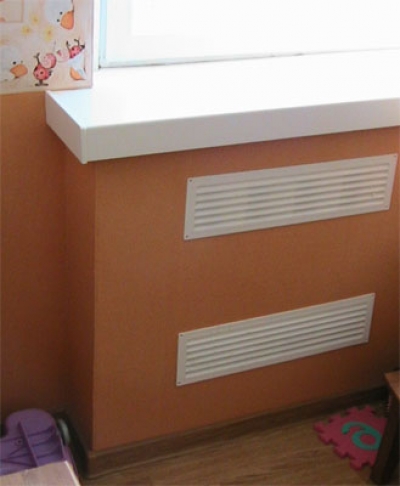
Service
As a heat carrier, the central heating system uses conventional process water, which is initially far from the ideals of purity. Having traveled a long way along the heating mains, the elevator unit, bottling and risers, the water, by the time it ends up in the battery, carries a large amount of suspension. Guess where they stay?
It is because of the gradual silting that once every few years, radiators require flushing. It requires the actual flushing valve, located in the lower corner of the heater on the opposite side from the supply, and ... free access to the radiator.
If it is not there, you will either have to put up with the fact that the first two out of ten sections heat up, or break a decorative box or screen made by yourself.
Faults
When deciding how to close a heating radiator, it is useful to remember one more thing. Everything breaks sooner or later. Since, presumably, if the appearance of the radiator and pipes does not suit you, they are no longer new - most likely, there will be a bit of a breakdown. What can happen?
Plenty of options:
- The steel pipes on the threads in front of the battery are thinner than on the straight sections of the riser, and leak first of all.
- The risers themselves, welded from an electric-welded water and gas pipe, sometimes leak along the factory weld.
- A leak from under the lock nut of the radiator is a frequent visitor in apartments with cast-iron heaters.
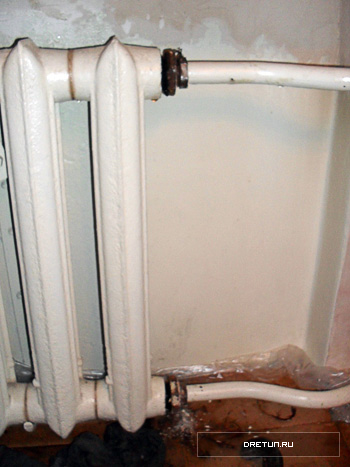
Locknuts are one of the sore points of cast iron batteries.
- Finally, in spring and autumn, leaks between radiator sections are frequent. Paronite gaskets no longer provide tightness after several years of operation.
conclusions
Any decorative screen in front of the radiator:
- Should create as few obstacles as possible to convection and thermal radiation. The ideal is a metal or plastic decorative screen in the form of a coarse mesh. First of all, solid boxes on top, where hot air rises, are unacceptable.
- Should be easy to remove. It is best to be attached, without any permanent attachment.
Pipes should also be easily accessible if necessary. If, despite the above, you decide how to close the heating pipes with drywall - well, your right. At least provide a light plastic door near the radiator inlet. And, of course, be prepared to disassemble the structure you created at the first leak.
Solutions
So, how to close heating radiators, taking into account all of the above?
decorative screen
We have already mentioned the main selection criteria. Mesh wherever possible and no permanent fixing to the wall.
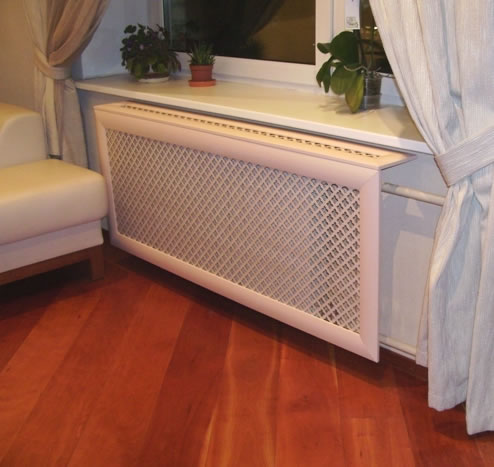
When choosing, you will surely come across several alternative options that you will really like in appearance. Alas, no matter how attractive the design and price of the product are, remember that in winter the house requires, first of all, warmth.
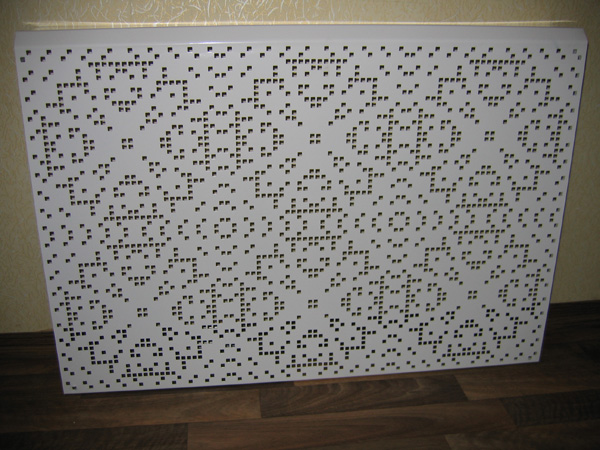
wooden lattice
How to close radiators if you want to put your own hands to work?
The instruction is simple: assemble an attached wooden grate. Thin mounting rails are easy to buy at the hardware store, and stain and varnish will make your work truly memorable.
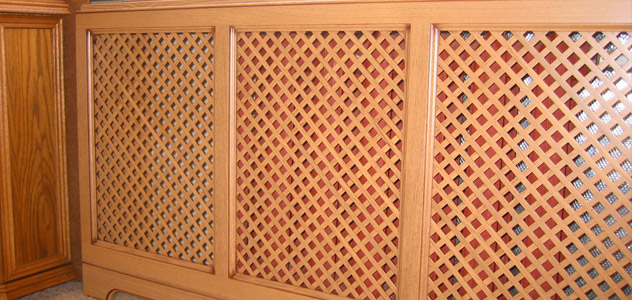
The Healthiest Decision
Finally, consider another option. Perhaps it is better not to think than to close the heating pipes with rust stains and flaky batteries, but to replace them with new ones? Both an aluminum radiator and a snow-white pipe made of reinforced polypropylene will not spoil the design of the home at all. Rather the opposite.
More importantly, in this case, possible problems with the heating system will remain in the past for a long time.
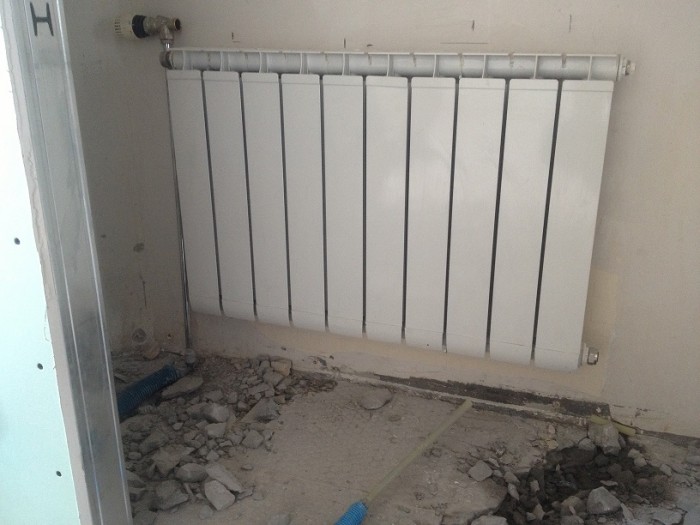
Conclusion
You listened to the opinion of the plumber and, we dare to hope, took note. The video at the end of the article will offer you a different point of view on the problem: the same question will be considered from the point of view of the designer.
Good luck decorating your home!
 Facade design of a country house: a variety of stylistic trends
Facade design of a country house: a variety of stylistic trends Wooden ceilings - 25 interior examples
Wooden ceilings - 25 interior examples How to make a children's playhouse with your own hands
How to make a children's playhouse with your own hands